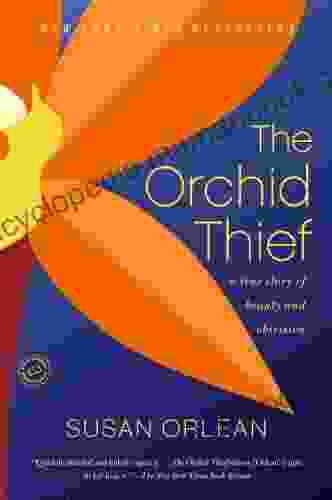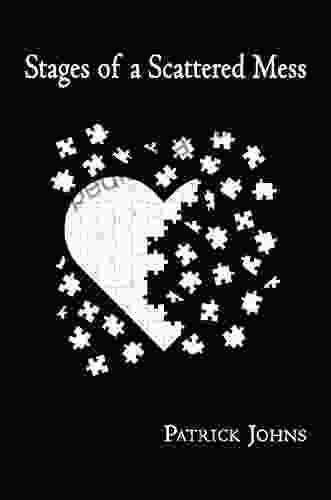Music Modernity and Locality in Prewar Japan: The Interplay of Western and Japanese Cultural Influences

Abstract
This article explores the complex relationship between music modernity and locality in prewar Japan (1868-1945). It examines how Western musical influences were absorbed and reinterpreted within local Japanese contexts, resulting in a unique and vibrant musical landscape. The article draws upon historical, musicological, and cultural studies research to provide a comprehensive understanding of this dynamic period in Japanese music history.
The Meiji Restoration of 1868 marked a significant turning point in Japanese history, initiating a period of rapid modernization and Westernization. Music was one of the many areas affected by this transformation, as Japan eagerly embraced Western musical forms and instruments. However, this process of musical modernization was not simply a one-way transmission of Western culture to Japan. Rather, it was a complex and multifaceted interaction that resulted in a unique blend of Western and Japanese musical elements.
5 out of 5
| Language | : | English |
| File size | : | 8158 KB |
| Text-to-Speech | : | Enabled |
| Screen Reader | : | Supported |
| Enhanced typesetting | : | Enabled |
| Print length | : | 332 pages |
| Paperback | : | 30 pages |
| Item Weight | : | 3.36 ounces |
| Dimensions | : | 8.5 x 0.07 x 11 inches |
The Early Years: Experimentation and Innovation
In the early years of the Meiji period, Japanese musicians experimented with a wide range of Western musical genres, including classical, popular, and military music. The Imperial Japanese Army Band, established in 1872, played a crucial role in introducing Western band music to Japan. Western-style conservatories were also founded, such as the Tokyo Music School (now Tokyo University of the Arts) in 1879, which provided training in Western musical theory and performance.
One of the most influential figures in the early development of Japanese modern music was Kosaku Yamada (1886-1965). Yamada studied composition in Germany and became a prominent composer of both Western and Japanese music. His works, such as the "Symphony in D Minor" (1925) and the "Kabuki Overture" (1929),successfully fused Western and Japanese musical elements.
The Rise of Japanese Folk Music
Alongside the adoption of Western musical forms, there was also a growing interest in traditional Japanese folk music during the Meiji period. Scholars and musicians began to collect and document these songs, which had previously been passed down orally from generation to generation.
One of the most famous examples of this revival of Japanese folk music is the "Min'yō" movement. Min'yō are traditional Japanese folk songs that reflect the lives and customs of different regions of Japan. In the late 19th and early 20th centuries, these songs were popularized through performances by professional singers and the publication of songbooks.
The Influence of Nationalism and Militarism
As Japan became increasingly militaristic in the lead-up to World War II, there was a growing emphasis on promoting Japanese culture and identity through music. The government encouraged the creation of music that celebrated Japanese history, tradition, and military strength.
One of the most iconic examples of this trend is the "Gunka" (military song). Gunka were patriotic songs that were used to boost morale and glorify the Japanese military. They were widely performed by soldiers and civilians alike, and became an important part of Japanese popular culture during the war years.
Resistance and Contestation
Despite the government's efforts to control and promote certain types of music, there was also a vibrant underground music scene in prewar Japan. Artists and musicians who resisted the official narrative found expression in jazz, popular music, and experimental music.
For example, the jazz pianist Tsutomu Sekine (1910-2001) played a significant role in the development of Japanese jazz. He introduced bebop to Japan in the 1940s and became a influential figure in the postwar jazz scene.
The music of prewar Japan was a dynamic and complex blend of Western and Japanese influences. Through a process of experimentation, innovation, and contestation, Japanese musicians created a unique musical landscape that reflected the rapid social and cultural changes of the time. This period laid the foundation for the vibrant and diverse music scene that exists in Japan today.
5 out of 5
| Language | : | English |
| File size | : | 8158 KB |
| Text-to-Speech | : | Enabled |
| Screen Reader | : | Supported |
| Enhanced typesetting | : | Enabled |
| Print length | : | 332 pages |
| Paperback | : | 30 pages |
| Item Weight | : | 3.36 ounces |
| Dimensions | : | 8.5 x 0.07 x 11 inches |
Do you want to contribute by writing guest posts on this blog?
Please contact us and send us a resume of previous articles that you have written.
 Top Book
Top Book Novel
Novel Fiction
Fiction Nonfiction
Nonfiction Literature
Literature Paperback
Paperback Hardcover
Hardcover E-book
E-book Audiobook
Audiobook Bestseller
Bestseller Classic
Classic Mystery
Mystery Thriller
Thriller Romance
Romance Fantasy
Fantasy Science Fiction
Science Fiction Biography
Biography Memoir
Memoir Autobiography
Autobiography Poetry
Poetry Drama
Drama Historical Fiction
Historical Fiction Self-help
Self-help Young Adult
Young Adult Childrens Books
Childrens Books Graphic Novel
Graphic Novel Anthology
Anthology Series
Series Encyclopedia
Encyclopedia Reference
Reference Guidebook
Guidebook Textbook
Textbook Workbook
Workbook Journal
Journal Diary
Diary Manuscript
Manuscript Folio
Folio Pulp Fiction
Pulp Fiction Short Stories
Short Stories Fairy Tales
Fairy Tales Fables
Fables Mythology
Mythology Philosophy
Philosophy Religion
Religion Spirituality
Spirituality Essays
Essays Critique
Critique Commentary
Commentary Glossary
Glossary Bibliography
Bibliography Index
Index Table of Contents
Table of Contents Preface
Preface Introduction
Introduction Foreword
Foreword Afterword
Afterword Appendices
Appendices Annotations
Annotations Footnotes
Footnotes Epilogue
Epilogue Prologue
Prologue Tyra Curran
Tyra Curran Naomi Novik
Naomi Novik Katrina Kahler
Katrina Kahler Alfa
Alfa Elliott Garber
Elliott Garber Taylor Mali
Taylor Mali Mary D Esselman
Mary D Esselman Holly J Martin
Holly J Martin George Ellis
George Ellis Gene Stratton Porter
Gene Stratton Porter Linda A Wood
Linda A Wood Instawise Books
Instawise Books Ember Flint
Ember Flint Samuel Johnson
Samuel Johnson Larry Swedroe
Larry Swedroe Blaze Ward
Blaze Ward Nedu
Nedu Larry Beckett
Larry Beckett Meg Belviso
Meg Belviso Christian Blake
Christian Blake
Light bulbAdvertise smarter! Our strategic ad space ensures maximum exposure. Reserve your spot today!

 Floyd RichardsonUncovering Student Ideas In Physical Science Volume: Exploring Student...
Floyd RichardsonUncovering Student Ideas In Physical Science Volume: Exploring Student...
 Julio Ramón RibeyroThe Unsettling True Story of Beauty and Obsession: Unveiling the Secrets of...
Julio Ramón RibeyroThe Unsettling True Story of Beauty and Obsession: Unveiling the Secrets of...
 Christopher WoodsDelve into the Enigmatic World of Currencies: An In-depth Exploration with...
Christopher WoodsDelve into the Enigmatic World of Currencies: An In-depth Exploration with... Abe MitchellFollow ·5.6k
Abe MitchellFollow ·5.6k Darrell PowellFollow ·8.4k
Darrell PowellFollow ·8.4k Nathan ReedFollow ·2.2k
Nathan ReedFollow ·2.2k Rick NelsonFollow ·10.7k
Rick NelsonFollow ·10.7k Joel MitchellFollow ·2.2k
Joel MitchellFollow ·2.2k Mark MitchellFollow ·17.8k
Mark MitchellFollow ·17.8k Stanley BellFollow ·6.5k
Stanley BellFollow ·6.5k Italo CalvinoFollow ·2.3k
Italo CalvinoFollow ·2.3k

 Fabian Mitchell
Fabian MitchellTen Thousand Spirals: Leccion Inagural Del Curso...
Ten Thousand...

 Howard Blair
Howard BlairThe Captivating Collection of High School Romance Poetry
Love's First...
5 out of 5
| Language | : | English |
| File size | : | 8158 KB |
| Text-to-Speech | : | Enabled |
| Screen Reader | : | Supported |
| Enhanced typesetting | : | Enabled |
| Print length | : | 332 pages |
| Paperback | : | 30 pages |
| Item Weight | : | 3.36 ounces |
| Dimensions | : | 8.5 x 0.07 x 11 inches |












